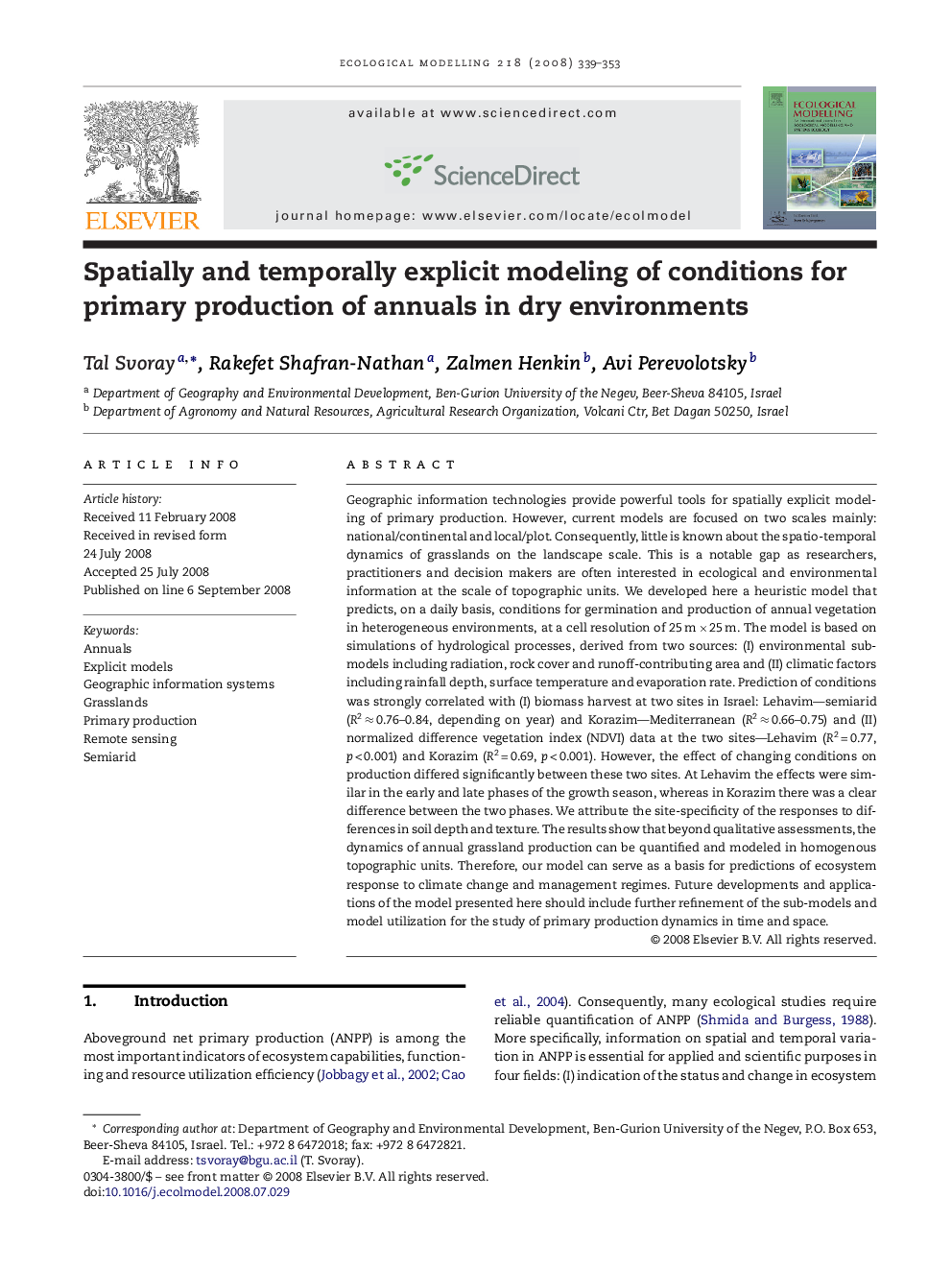| Article ID | Journal | Published Year | Pages | File Type |
|---|---|---|---|---|
| 4378438 | Ecological Modelling | 2008 | 15 Pages |
Geographic information technologies provide powerful tools for spatially explicit modeling of primary production. However, current models are focused on two scales mainly: national/continental and local/plot. Consequently, little is known about the spatio-temporal dynamics of grasslands on the landscape scale. This is a notable gap as researchers, practitioners and decision makers are often interested in ecological and environmental information at the scale of topographic units. We developed here a heuristic model that predicts, on a daily basis, conditions for germination and production of annual vegetation in heterogeneous environments, at a cell resolution of 25 m × 25 m. The model is based on simulations of hydrological processes, derived from two sources: (I) environmental sub-models including radiation, rock cover and runoff-contributing area and (II) climatic factors including rainfall depth, surface temperature and evaporation rate. Prediction of conditions was strongly correlated with (I) biomass harvest at two sites in Israel: Lehavim—semiarid (R2 ≈ 0.76–0.84, depending on year) and Korazim—Mediterranean (R2 ≈ 0.66–0.75) and (II) normalized difference vegetation index (NDVI) data at the two sites—Lehavim (R2 = 0.77, p < 0.001) and Korazim (R2 = 0.69, p < 0.001). However, the effect of changing conditions on production differed significantly between these two sites. At Lehavim the effects were similar in the early and late phases of the growth season, whereas in Korazim there was a clear difference between the two phases. We attribute the site-specificity of the responses to differences in soil depth and texture. The results show that beyond qualitative assessments, the dynamics of annual grassland production can be quantified and modeled in homogenous topographic units. Therefore, our model can serve as a basis for predictions of ecosystem response to climate change and management regimes. Future developments and applications of the model presented here should include further refinement of the sub-models and model utilization for the study of primary production dynamics in time and space.
